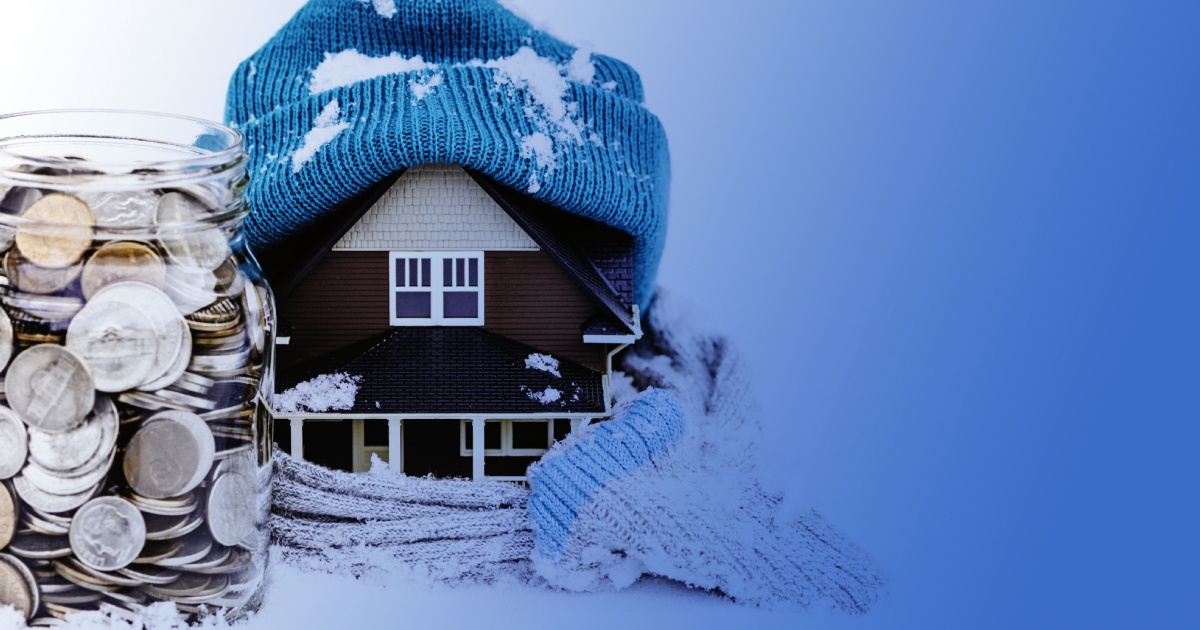New home builders offer hints to get you through the winter
Colorado winters are often cold and snowy. With an average of 57 inches of snow each year, homeowners must plan ahead to keep their homes safe and buttoned up against the frigid temperatures.
Winterizing a home isn’t difficult, but it does take a little time and effort. Whether you live in an existing neighborhood or one of the many ready-to-move-in homes in a new home community, you’ll want to spend some time winterizing the place. Otherwise, you may experience damage and related expenses due to broken pipes, a worn-out furnace, or a frozen sprinkler system.
New Home Builders Know the Score
Oakwood Homes — a premier builder of quick move-in homes in Colorado — shares the following tips for winterizing your home. Now is the time to get started!
Tip #1: Check the Furnace
The main goal in winterizing the house is to ensure your family’s safety and comfort. This means keeping everyone warm and toasty! If you’ve just purchased a home in a new home community, you’re probably set in this regard. For all others, a quick check of the furnace before the temps drop will ensure that your place stays reasonably comfortable all winter. It’s best to bring in professionals for this step so they can check the system for leaks and make sure it’s running properly. When furnaces go out in the winter months, it can be hard to find an HVAC company that’s available. They’re all busy making emergency house calls to those who didn’t plan ahead!
Tip #2: Winterize the Sprinkler System
If your yard has a sprinkler system, you’ll want to schedule a system blow-out before temperatures drop below freezing. This clears the lines of any standing water and prevents the lines from freezing and expanding, which could cause them to burst. Sprinkler systems can be expensive to repair, so it’s worth your time to ensure they’re well protected for the winter.
Tip #3: Clean Gutters and Downspouts
Snowmelt can’t drain from your roof properly if the gutters and downspouts are clogged with leaves, twigs, and other debris. Clean out the gutters and downspouts and check for any areas where the guttering may be pulling away from the house. Have roofing professionals out to do this for you if you’re not comfortable doing it yourself.
Ensuring a clear path for water to exit the roof is critical to preventing ice dams (otherwise known as icicles). Ice dams, if left unattended, can cause a lot of damage to the roof. As the dam gets bigger, it pushes up under the eaves and the shingles, loosening them so that moisture gets in underneath. This eventually results in leaks in the rooms below. No one wants to deal with expensive roof repairs, so keep those gutters and downspouts cleaned out!
Tip #4: Trim Branches Away from the House
As a follow-up to Tip #3, trim tree branches back from the house. This helps prevent leaves and sticks from falling into the gutters in the first place. Experts recommend trimming overhanging branches back to a minimum of six feet from the edge of the roofline for best results.
Tip #5: Check the Insulation
Many construction experts agree that the average single-family home in the US is under-insulated. If you live in one of the new move-in-ready homes in the area, you probably don’t have this issue. But for those living in older homes, another way to keep the house warmer is to add insulation in the attic and crawl spaces. The EPA estimates that Colorado homeowners can save an average of 16-17% on their utility costs by adding insulation to these spaces, making this simple task one that really pays off in the long run.
Tip #6: Seal Up the Gaps
One of the best ways to ensure the house stays warm this winter is to seal up any gaps that invite the cold air to come inside. Check around the windows and doors for drafts. Replace weather stripping around doors, if necessary. Caulk around the windows if you can feel air coming in. You may want to try carrying a candle around, holding it in front of doors and windows to find the gaps. If the flame goes out, you have a problem. The more gaps you eliminate, the better the chance that cold air will stay outside where it belongs. This helps your furnace run much more efficiently.
A New Home Community Gets You Halfway There!
New homes have fewer things to take care of when it comes to getting ready for winter. The furnace is new, the doors and windows are all sealed properly, and there’s plenty of insulation in all the right places. Winterizing is a snap from there! If that sounds ideal to you, start searching for “new builds near me.” You’ll find a nice selection of ready-to-move-in homes built by Oakwood Homes.
Welcome to the neighborhood!

